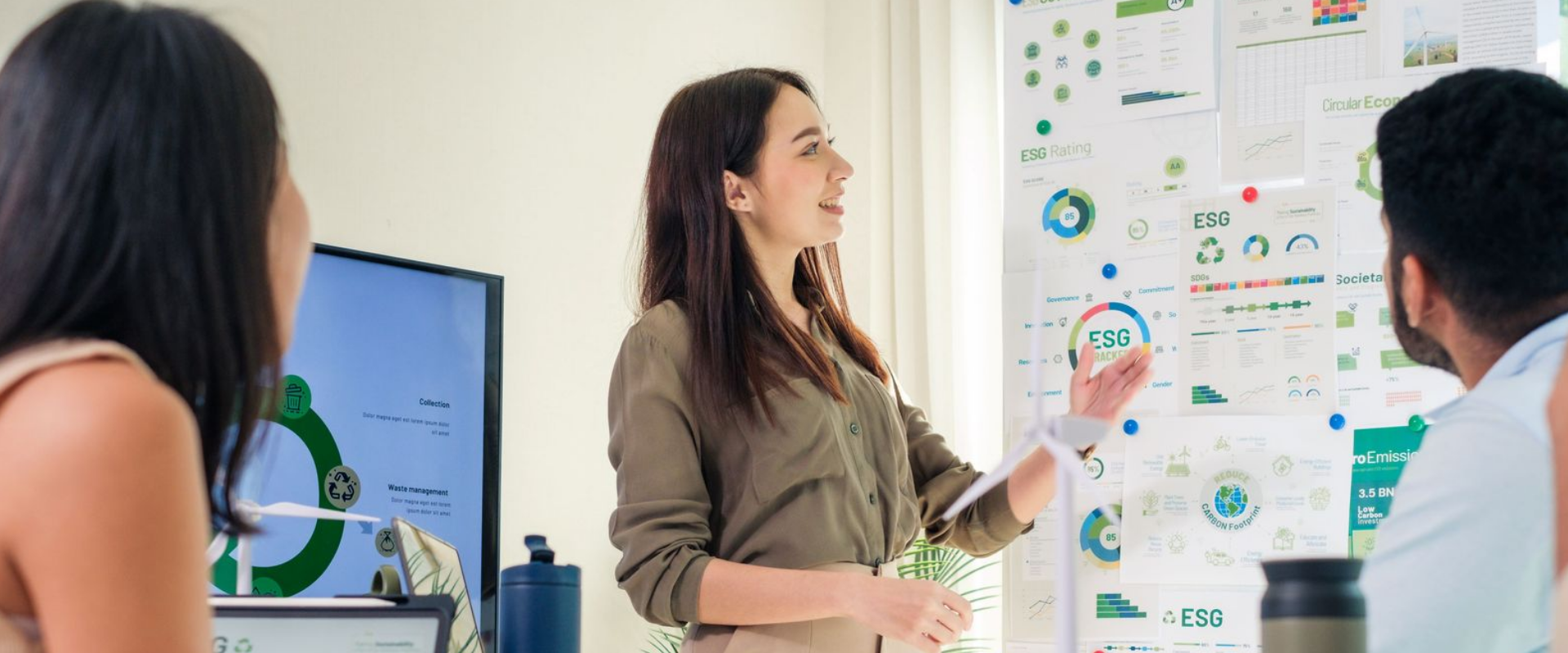
Sustainability has evolved into a powerful force across the entire packaging value chain, influencing everything from market leadership and brand perception to bottom-line performance. L.E.K. Consulting’s recent packaging study reveals that 95% of brand owners have set medium-term sustainability goals, a clear sign that the push toward greener solutions is no longer a choice but a key to staying relevant in the industry’s future. However, sustainability today involves more than just addressing packaging product characteristics such as recyclability, compostability and reusability. The scope has expanded significantly to include everything from minimizing greenhouse gas emissions to increasing the use of renewable energy in packaging production.
Despite these ambitious targets, many companies are struggling to achieve their sustainability goals, with only 45% of brand owners reporting they’ve met their sustainability objectives to date. This disconnect between ambition and reality underscores the difficulties brand owners and packaging manufacturers face in translating sustainability goals into actionable, measurable outcomes — a challenge that the L.E.K. Environmental Assessment for Packaging (L.E.A.P.) is uniquely positioned to address.
L.E.A.P. offers a comprehensive framework that helps brand owners and packaging manufacturers identify the most critical packaging sustainability metrics, set meaningful benchmarks and refine strategies to close the gap between goals and results, ultimately advancing sustainability efforts and gaining competitive advantage.
Why now? The urgency of sustainable packaging
Companies across the packaging value chain are at a pivotal moment. Consumer demand for sustainable packaging continues to skyrocket, and regulatory expectations continue to evolve but create complexity given the lack of uniformity across municipalities and states. Businesses that fail to act risk falling behind, while those that embrace sustainability can position themselves as leaders.
Key sustainability themes ― such as eliminating problematic materials, incorporating recycled materials, reducing excess materials and providing disposal guidance ― have now moved beyond being considerations to being imperatives for long-term success (see Figure 1).
Regulatory changes are further intensifying this shift. For instance, U.S. states are progressively enacting packaging sustainability regulations, with 56% of the population now covered by mandates addressing model toxins in packaging and 28% impacted by single-use plastic bans (see Figure 2). These expanding regulations are not just compliance hurdles ― they are opportunities to lead in sustainability innovation.
As sustainability standards shift and grow in importance, L.E.A.P. provides invaluable insights that help companies stay focused on critical areas. It empowers brand owners and packaging manufacturers to confidently navigate emerging market demands and sustainability trends. By staying ahead of these changes, businesses can proactively address challenges, seize new opportunities and safeguard against potential supply chain disruptions.
How L.E.A.P. works
The journey from setting sustainability goals to achieving measurable results can be complex and challenging. L.E.A.P. simplifies this process by providing a clear, structured approach that helps companies navigate the intricacies of sustainability in packaging. Through a well-defined four-step process (see Figure 3), this assessment equips businesses with the insights and tools they need to not only anticipate market demands but to also drive meaningful impact in their sustainability initiatives.
Step 1: Regulatory context
Review existing and potential packaging environmental, social and governance regulations that could impact your company’s products, considering factors such as geographic location, substrate usage and end-market exposure.
Step 2: Industry commitment benchmarking
Compare your company’s packaging sustainability commitments against those of key industry peers. This step evaluates your progress on critical dimensions such as commitment types (e.g., reducing plastic content or transitioning to renewable energy) and the current status of meeting these commitments.
Step 3: Sustainability readiness diagnostic
Assess your company’s operational readiness for sustainability using 19 key leading indicators from our proprietary framework. This diagnostic provides insight into how prepared your company is to execute on its sustainability goals compared to the actual performance of industry peers.
Step 4: Synthesis and implications
Synthesize key findings to inform potential actions and investment opportunities with compelling return on investment. This step integrates the regulatory context, peer commitment evolution and the presence of leading sustainability readiness indicators, offering strategic insights to guide your company’s next steps.
To test the accuracy of the scorecard in assessing company sustainability performance, we examined the relationship between company readiness scores (calculated through the scorecard) and company performance outcomes (derived from secondary data from sources such as the Ellen MacArthur Foundation and the Science-Based Targets Initiative), which is illustrated in Figure 4. This rigorous methodology ensures that the L.E.A.P. scorecard provides reliable and effective insights that companies can trust to guide their sustainability strategies.
Leveraging L.E.A.P. to drive impact
L.E.A.P. empowers brand owners and packaging manufacturers to turn their sustainability goals into actionable strategies by providing comparative insights, benchmarking their efforts against industry peers and identifying opportunities for quick wins while guiding long-term growth.
For example, a company might think it’s on track to meet near-term sustainability targets, but discovers through L.E.A.P. that it is falling behind its peers in areas that have not been prioritized or well communicated publicly. With this insight, the company can adjust its focus, addressing these gaps to strengthen its overall sustainability performance and stay competitive. Another company might find that while it has made progress in reducing emissions, there’s still significant room for improvement in resource management — a critical focus as regulatory demands continue to rise.
Much like how stock-keeping unit rationalization helped companies streamline product portfolios to boost margins, L.E.A.P. enables companies to refine their sustainability initiatives to maximize impact. Its versatility makes it applicable across a wide range of industries, from fast-moving consumer goods companies looking to streamline packaging processes and reduce waste to healthcare companies aiming to enhance the sustainability of their supply chains. By addressing the unique needs of brand owners and packaging manufacturers, L.E.A.P. ensures that companies have the strategic insights to thrive in a rapidly changing market.
Ready to lead in packaging sustainability?
L.E.A.P. is an indispensable tool for taking the next step in your sustainability strategy. Contact us to learn how it can support your goals and drive meaningful impact.
L.E.K. Consulting is a registered trademark of L.E.K. Consulting LLC. All other products and brands mentioned in this document are properties of their respective owners. © 2024 L.E.K. Consulting LLC
12132024131230







